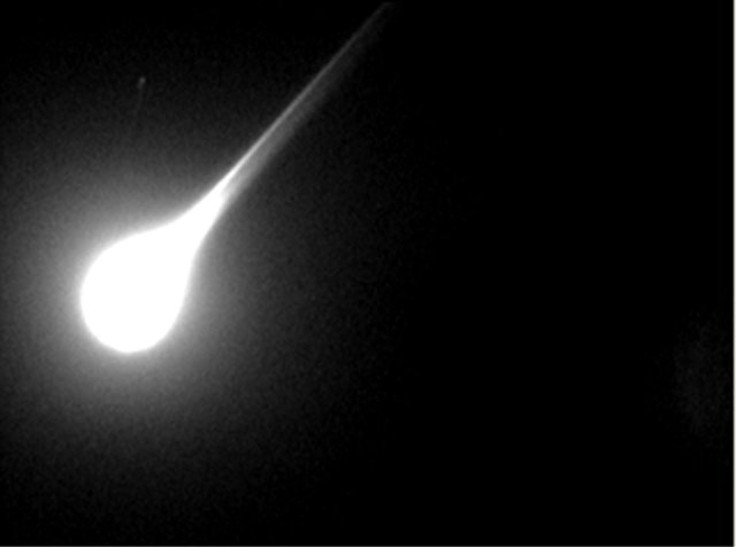Meteor Explodes Over Earth With Force Of 10 Atomic Bombs, But We Missed It [PHOTOS]

A massive meteor exploded over Earth in December with the impact energy of about 10 atomic bombs, but hardly anyone noticed it happened.
On Dec. 18, 2018, a school bus-sized meteor entered the Earth's atmosphere and exploded, causing a blast that NASA confirmed was the second-largest meteor impact since the space agency began tracking them over three decades ago. The only impact more powerful in recent history was the infamous fireball that exploded over Chelyabinsk, Russia, back in February 2013.
Some colour views of the #meteor that flew over the North Pacific in December 2018, taken by Japan's #Himawari satellite.
— Simon Proud (@simon_sat) March 18, 2019
The meteor is really clear here - bright orange fireball against the blue + white background!
Background: https://t.co/r403SQxicZ pic.twitter.com/ctNN8zxsXb
NASA planetary defense officer Lindley Johnson told BBC News a space rock this big "is only expected about two or three times every 100 years."
Despite the massive blast, it seems most people missed it and nobody saw it coming as well. This might be because the meteor exploded over the Bering Sea, a cold stretch located miles away from inhabited land. It is a part of the Pacific Ocean that can be found between Russia and Alaska.
The U.S. Air Force was the first to detect the meteor impact due to their missile-monitoring satellites and informed NASA. Some scientists around the world may have also caught the rumble of the meteor blast when it registered on infrasound detections. These are stations that measure low-frequency sound waves inaudible to human ears.
Asteroid-monitoring groups also missed the meteor's descent due to its smallish size.
Alan Fitzsimmons, an astronomer at Queen’s University Belfast in Northern Ireland, revealed to New Scientist that most modern telescopes are mostly geared towards detecting objects measuring several hundred meters or more in diameter. This means that meteors like the one that shattered back in December, which was about 32 feet (10 meters) across, could easily be missed.
The meteor weighed around 1,500 tons (1,360 metric tons). It was falling through the atmosphere at about 71,582 mph (115,200 kilometers per hour) when it shattered.
The space rock exploded about 15.5 miles (25 kilometers) over the sea and erupted with an energy equivalent to 173 kilotons of TNT. This is about 10 times the energy produced by the atomic bomb that struck Hiroshima, Japan, during World War II.
"That was 40% the energy release of Chelyabinsk, but it was over the Bering Sea so it didn't have the same type of effect or show up in the news," Kelly Fast, NASA near-Earth objects observations programme manager, told the BBC."That's another thing we have in our defense, there's plenty of water on the planet."
It is also likely that NASA asteroid hunters had not paid much attention to it as they are mainly concerned with identifying near-Earth objects that are around 460 feet or 140 meters in diameter, Live Science previously reported. If objects this large entered the atmosphere and exploded on Earth, they could potentially wipe out entire U.S. states.
© Copyright IBTimes 2024. All rights reserved.





















